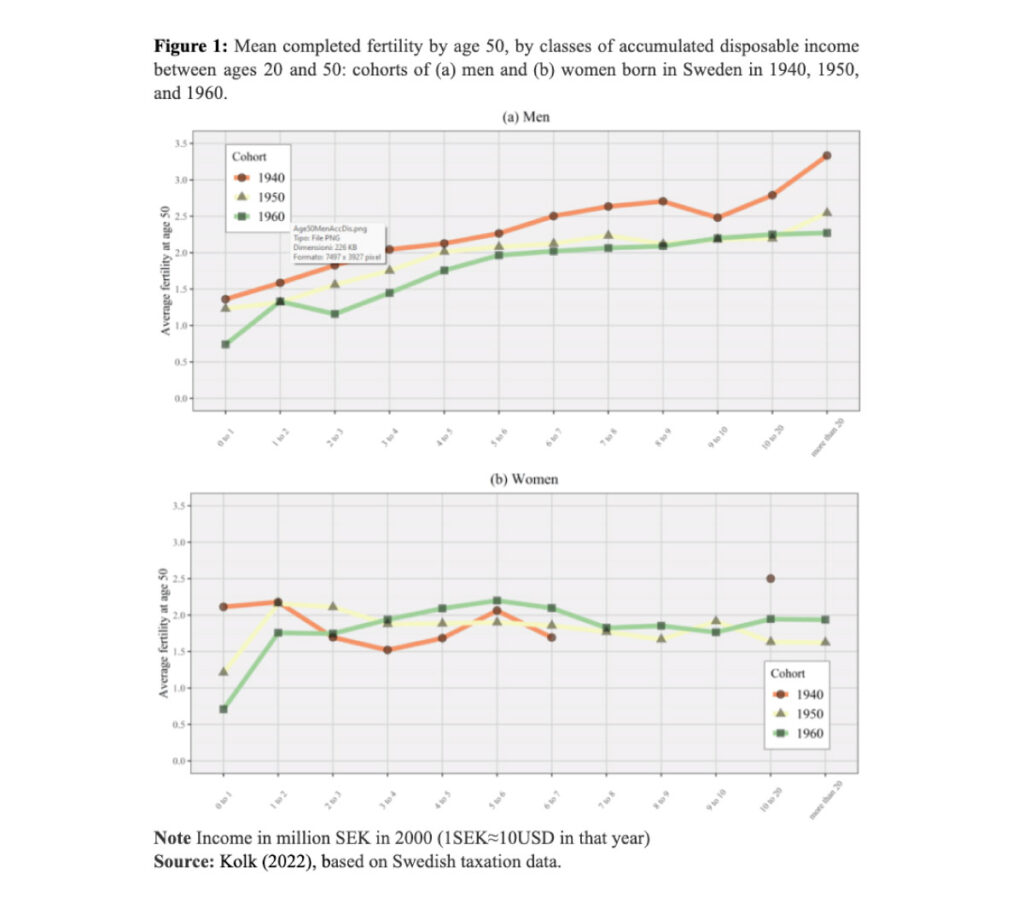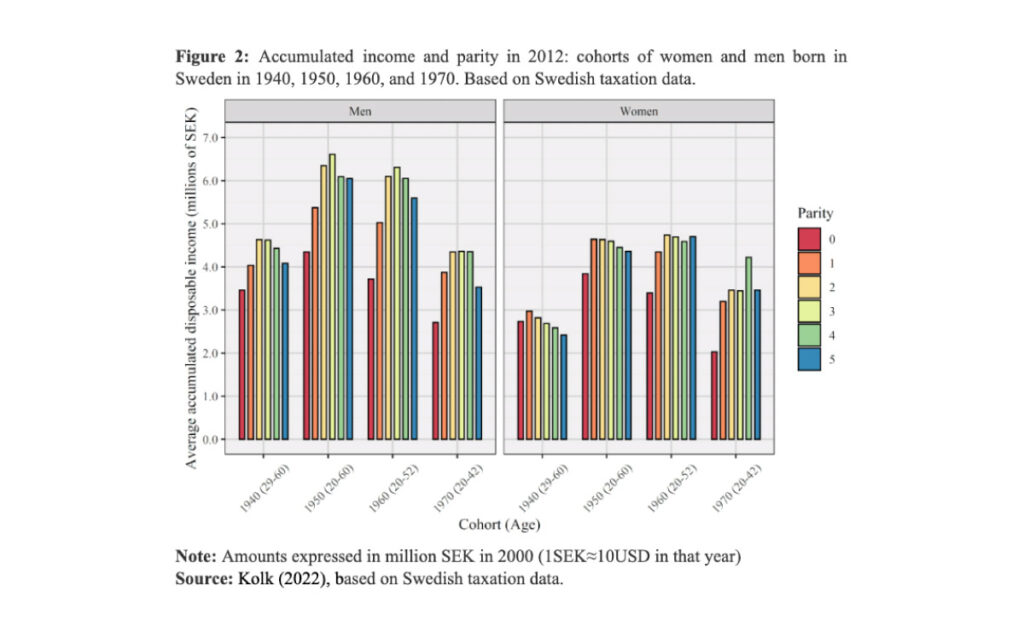Income and fertility – a positive relationship?
March 27, 2023 Martin Kolk
In Sweden, a positive association is emerging between income and fertility, Martin Kolk observes. Men and women with higher incomes have more children than their less wealthy peers, and the poorest are the least likely to have children. If the trend continues, the income-fertility relationship of the 20th century, to which we are accustomed, may be reversed in the 21st century.
Is it poorer or richer people who have more children? This question, central to many of the founders of social science and statistics in the 19th and 20th centuries, remains an important topic in demography. It is common wisdom among both the public and many researchers that poorer individuals have more children, but in a new study, I provide evidence that this idea may be incorrect, at least in Sweden (Kolk, 2022).
Lifetime earnings and fertility
To evaluate life course income, and assess its association with childbearing, I used yearly Swedish taxation registers, restricting the analysis to national data on Swedish-born men and women, who were studied separately. Analyzing my data by birth cohorts, I summed all re-evaluated incomes over working ages. This allowed me to circumvent many of the issues related to short-term interrelations between income and childbearing, such as women leaving the labor market to take care of young children.
For men, a consistently positive gradient emerged for all cohorts: the number of children increases monotonically across income (Figure 1, panel 1a). For women, the relationship is more complicated and changes over time (Figure 1, panel 1b). Among those born in the 1940s, no or very low income (i.e., being or becoming a homemaker) is associated with the highest number of children. In later cohorts, however, the reverse is true: it is women with no or little income who have the lowest fertility, although the relationship vanishes above a certain income threshold (women of all upper income classes having similar fertility).

Much of this relationship is due to low income among childless men and women, suggesting that an increasingly large group of low socioeconomic status individuals are excluded from partnerships and childrearing (Figure 2). Lifetime incomes are highest for men and women with 2-4 children, although for very high numbers of children (5 and above, representing less than 1.5% of the population), incomes are somewhat lower.

Both figures (1 and 2) refer to disposable income, which includes government transfers to parents, such as parental leave and child allowances. This may partly affect the findings as the Swedish welfare state provides many benefits for parents, and these are usually paid to mothers. Indeed, if we include only labor income (excluding parental leaves and child allowances), we get similar results for men, but not for women: the gradient remains negative for more birth cohorts (the richer having fewer babies), and it turns positive only for those born in the 1970s.
Implications
Previous negative associations between income and fertility may have been partly due to cultural orientations and values that differed between high and low socioeconomic status groups in Sweden (and other countries), but these differences are either shrinking or being outweighed by a new economic reality: children, who are expensive but arguably desirable to large groups in society, may be becoming a luxury that not everybody can afford.
Sweden is a society where combining wage labor and childrearing is still largely possible: some of the reasoning above may be conditioned on welfare state support for childrearing and female employment, and many of my findings may not be applicable to other contexts. Nevertheless, if I were to make a forecast for the 21st century, I would speculate that a positive relationship between income and fertility will emerge in an increasing number of contexts all over the world, in one or more of the following forms:
• an individual-level positive gradient between personal income and fertility,
• a positive link between fertility and the business cycle, and
• higher fertility in the world’s richest countries than in less wealthy parts of the globe.
Indeed, the findings of an increasing number of studies are consistent with these patterns: e.g., Hopcroft (2022) in the US, Fox et al (2019) at the regional level in Europe, and Jalovara and Fasang (2020) in Finland.
References
- Kolk, M. (2022). The relationship between life-course accumulated income and childbearing of Swedish men and women born 1940–70. Population Studies, available online
- Fox, J., Klüsener, S., & Myrskylä, M. (2019). Is a positive relationship between fertility and economic development emerging at the sub-national regional level? Theoretical considerations and evidence from Europe. European Journal of Population, 35, 487‒518.
- Hopcroft, R. L. (2022). Husband’s income, wife’s income, and number of biological children in the US. Biodemography and Social Biology, 67(1), 71‒83.Jalovaara, M., & Fasang, A. E. (2020). Family life courses, gender, and mid-life earnings. European sociological review, 36(2), 159‒178.
No comments:
Post a Comment